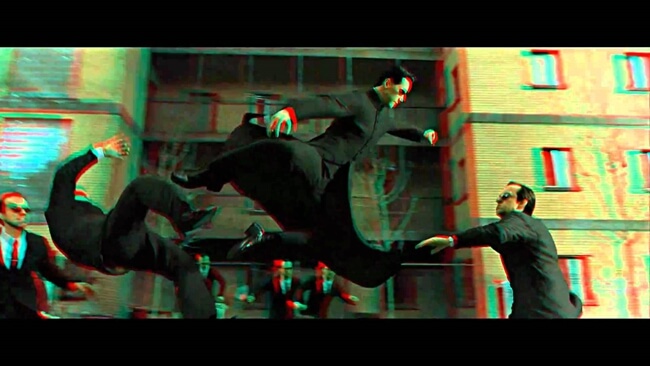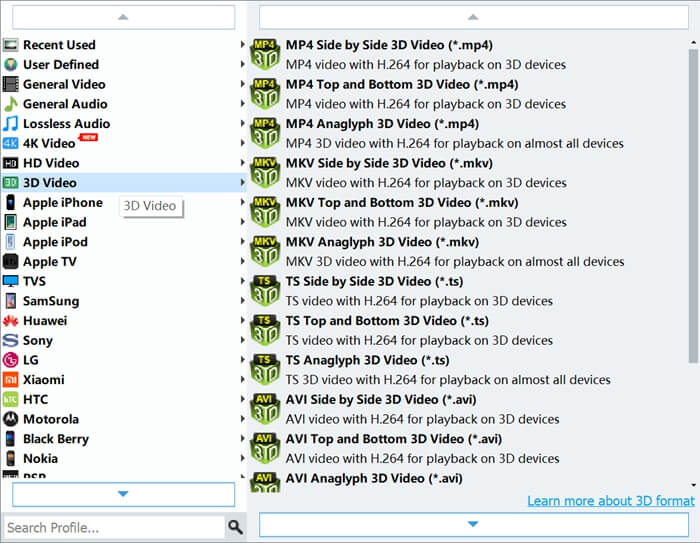Part 1. Overview of 3D
Simply speaking, 3D stands for 3 Dimensions or 3 Dimensional and refers to something with width, height, and
depth.
- It is a complex mix of color, textures, virtual lighting and perspective to make the images appear
three-dimensional.
- It is generally applied when something that is traditionally flat (two dimensional) such as a picture has
depth added.
- It is a widely adopted entertainment technology used in 3D television, 3D movies or 3D images to
distinguish them from their traditional flat version.
Part 2. How 3D Works
Both 3D TVs and 3D movies screens are flat, so how do they create a 3D image? In order to understanding the
basic 3D technology techniques, it is important to first understand how the human sight works. Human beings
have two eyes which are about 3 inches apart from each other. This distance between the two eyes produce two
slightly different images which are transmitted to the brain. The brain will then make a space in where
distance and depth can be perceived.
This is exactly how 3D technology works in order to produce this same kind of space in your brain. It tricks
your brain into seeing depth that is not there by separating the images. By providing a different image to
each eye it created the illusion of 3D. And the human being should then be wearing a set of 3D glasses that
will help in dissecting this image and transmit it into the correct eye.
Part 3. Most Common 3D Movies/TV Formats Explained
1. Anaglyphs 3D
Anaglyphs was one of the first historical methods used for 3D stereoscopic visualization. It is still popular
– because it is easy to make an anaglyph visualization setup. From the special equipment you need only
red/blue or red/green glasses. The left eye usually uses red glass. There could be different colors of the
right glass – cyan, blue or green.
The visualized scene is mixed from left and right images, each displayed in different color. The color
glasses take care about image separation. The main trade of this technology is complete loss of color
information. Each eye sees completely different color interpretation of the scene. The brain can reconstruct
the color information from such data.
With just a pair of archetypical 3D glasses, you can watch the Anaglyph 3D videos on common TV, computer
monitors and even the common portable devices.
Sample anaglyph image:

2. Split Screen 3D
Split screen 3D includes Side-by-Side 3D and Top-and-Bottom 3D.
2.1 Side-by-Side 3D
SBS 3D, short for Side-by-Side 3D, has been a widely used 3D format besides frame-sequential 3D when airing
3D contents over cable onto 3D TV. In Side-by-Side 3D, a full 1080p or 720p frame is intended for both eyes at
the same time with two halves on the left and right, and the entire frame for the left eye and right eye
respectively scaled down horizontally to fit the left-half and right-half of the frame.
- Side-by-Side (Half-width): The left and right views of a 3D video are sun-sampled at half resolution. The
Display will stretch each side to full width and display them sequentially.
- Side-by-Side (Full): The horizontal left and right material are shown at full resolution and stored side
by side with doubled frame rates, better quality but bigger file.
Let‘s take a 720p (resolution of 1280*720) source video as an example.
|
Side by Side (Half-width) |
Side by Side (Full) |
| Resolution of the left eye frame |
640*720 |
1280*720 |
| Resolution of the right eye frame |
640*720 |
1280*720 |
| Resolution of the entire frame |
1280*720 |
2560*720 |
Sample image of SBS 3D:

2.2 Top-and-Bottom 3D
Top-and-Bottom 3D can be largely understood the same as SBS 3D, except that the entire frame for each eye is
respectively scaled down in a vertical way to fit the top-half and bottom-half of the frame. The top-half
frame is for the left eye while the bottom-half frame is for the right eye.
- Top-and-Bottom (Half-Height): Keep the resolution of the sources video.
- Top-and-Bottom (Full): Double the vertical resolution of the original video.
If you want to play a Side-by-Side 3D or Top-and-Bottom video, you need to get a 3D PC/ 3D TV and the
assorted 3D glasses. And the visual effect of SBS 3D and Top-and-Bottom 3D videos is much better than that of
Anaglyph 3D video.
Sample image of Top-and-Bottom 3D:

Part 4. How to Convert 2D Video to 3
VideoSolo Video Converter Ultimate is a 2D to 3D converter which can convert 2D video sources to 3D MKV, MP4,
MOV, WMV, AVI, etc. with three types of 3D effects: Side-by-Side 3D, Anaglyph 3D and Top-Bottom 3D. After the
2D to 3D conversion, you can play your converted 3D videos on 3D TV, 3D video player or other 3D devices
smoothly.






